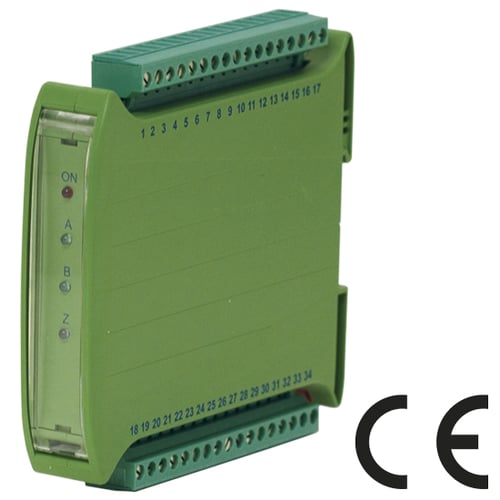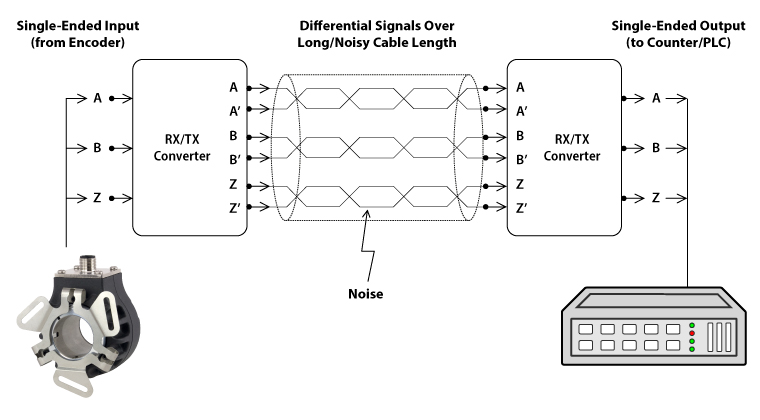EPC offers two converters that convert single-ended output signals to differential signals, and vice-versa: the RX/TX Converter and the RX/TXD Receiver-Transmitter. The RX/TX and the RX/TXD both convert single-ended signals into differential (RS422) signals for superior noise immunity. This allows an existing encoder with a single-ended output (Open Collector, Pull-up, or Push-Pull) to be used in applications where the differential signal type is required. Likewise, both devices can work the opposite way by converting a differential signal back to a single-ended push-pull signal. Although similar, these two devices are slightly different. The RX/TX Converter has one function: to convert the signal.
The RX/TXD, on the other hand, can perform four functions: converting, splitting, repeating, and even testing the encoder signal. The RX/TXD offers up to three outputs in any combination of differential and single-ended. This can be useful when attempting to operate multiple loads (i.e., controller or counter) from a single encoder, especially when input requirements differ. In addition to providing correct input signals, the RX/TXD can be used to increase signal integrity over long or noisy cable runs when both the encoder and controller/counter are configured for single-ended signals. By converting to differential signals for long or noisy cable runs, the signals will be much more robust and can be converted back to single-ended signals before going into the counter/PLC.




